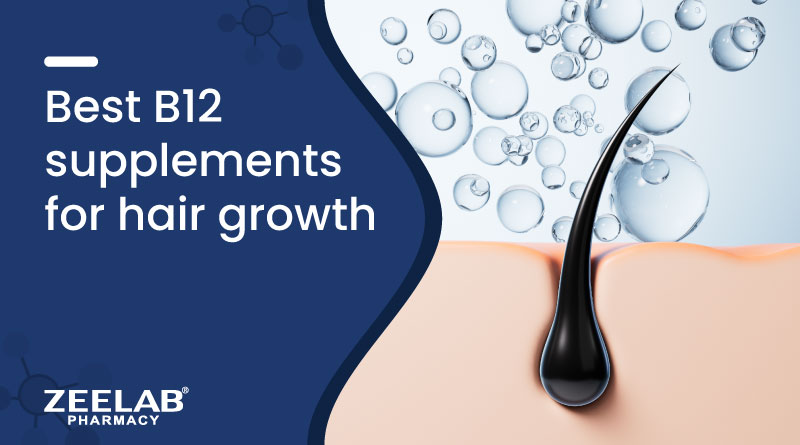Azelaic Acid For Melasma


Melasma is a common skin condition that causes dark, discolored patches to appear on the face, often on the cheeks, forehead, nose, and chin. It is more commonly seen in women, particularly those with darker skin tones. While several treatments are available for melasma, one that has gained attention in recent years is azelaic acid for melasma. Azelaic acid is a naturally occurring acid that helps reduce pigmentation and improve skin texture. In this article, we’ll explore the benefits of azelaic acid and melasma, how it works, and why azelaic acid cream for melasma can be an effective treatment option.
What is Azelaic Acid?
Azelaic acid is a dicarboxylic acid found in grains like barley, wheat, and rye. It is known for its antibacterial, anti-inflammatory, and skin-lightening properties. Azelaic acid works by inhibiting the production of melanin, the pigment responsible for skin color. This makes it particularly effective for treating skin conditions like melasma, acne, and rosacea.
How Does Azelaic Acid Work for Melasma?
When it comes to azelaic acid and melasma, the acid helps by reducing the appearance of dark spots and uneven skin tone. Melasma occurs due to the overproduction of melanin, often triggered by hormonal changes, sun exposure, or certain medications. Azelaic acid inhibits the enzyme tyrosinase, which plays a key role in melanin production. By slowing down the production of melanin, azelaic acid helps fade the dark patches caused by melasma.
In addition to its ability to lighten skin, azelaic acid also helps with the skin’s texture. It reduces inflammation, prevents clogged pores, and promotes healthy skin regeneration. These combined effects make azelaic acid cream for melasma an excellent option for individuals dealing with pigmentation issues like melasma.
Benefits of Azelaic Acid for Melasma
There are several benefits of using azelaic acid for melasma, including:
- Reduces hyperpigmentation: Azelaic acid helps fade dark spots, including those caused by melasma, by inhibiting melanin production.
- Improves skin texture: It promotes skin cell turnover, which can help with smoother skin and a more even complexion.
- Reduces inflammation: Azelaic acid has anti-inflammatory properties, which help calm irritated skin, especially in those with melasma.
- Safe for sensitive skin: Unlike some other skin-lightening treatments, azelaic acid is generally well-tolerated by most skin types, including sensitive skin.
- Works on acne and rosacea: Besides treating melasma, azelaic acid is also used to treat acne and rosacea, making it a multi-purpose skincare ingredient.
How to Use Azelaic Acid Cream for Melasma
To get the most out of azelaic acid cream for melasma, it’s important to use it correctly. Here are some simple steps to follow:
- Step 1: Start with clean skin. Wash your face with a gentle cleanser and pat dry with a soft towel.
- Step 2: Apply a thin layer of azelaic acid cream to the affected areas, focusing on the melasma spots. Avoid applying it to sensitive areas like the eyes or mouth.
- Step 3: Let the cream absorb fully into the skin before applying any other products.
- Step 4: Use azelaic acid twice daily, or as directed by your dermatologist, for optimal results. It’s usually recommended to use it in the morning and at night.
- Step 5: Be sure to apply sunscreen during the day, as azelaic acid can make your skin more sensitive to sunlight.
Is Azelaic Acid Cream Safe for Melasma?
Azelaic acid is considered safe for most people, including those with sensitive skin. Unlike other treatments for melasma, such as hydroquinone, azelaic acid is less likely to cause irritation or adverse reactions. However, it is always important to patch test a small area of your skin before applying it to larger areas, especially if you have a history of sensitive skin or allergies.
If you are pregnant or breastfeeding, it’s advisable to consult with your doctor before using azelaic acid. While there is no evidence that azelaic acid is harmful during pregnancy, it’s always better to err on the side of caution.
Also Read - Best Cream for Melasma in India
Azelaic Acid vs. Other Melasma Treatments
When considering treatment options for melasma, it’s important to compare different products. Azelaic acid is one of several treatments available, but how does it stack up against other popular options?
- Hydroquinone: Hydroquinone is a potent skin-lightening agent that inhibits melanin production. However, it can cause irritation, especially in people with sensitive skin. Azelaic acid is a gentler alternative with fewer side effects.
- Topical steroids: While steroids can reduce inflammation and lighten dark spots, they often come with potential side effects such as thinning of the skin or worsening pigmentation over time. Azelaic acid offers a safer, long-term solution.
- Laser treatments: Laser therapy can effectively treat melasma, but it can be costly and may cause side effects such as hyperpigmentation or scarring. Azelaic acid provides a more affordable and lower-risk option for long-term management.
Tips for Managing Melasma Alongside Azelaic Acid
While azelaic acid is an excellent treatment for melasma, there are additional steps you can take to enhance your results and prevent melasma from worsening:
- Sun protection: Always wear broad-spectrum sunscreen with SPF 30 or higher, even on cloudy days. Sun exposure is a major trigger for melasma.
- Gentle skincare routine: Avoid harsh products that may irritate your skin, such as abrasive scrubs or alcohol-based toners.
- Stay hydrated: Drink plenty of water to keep your skin hydrated and healthy, which can help with the healing process.
- Consult a dermatologist: If you’re not seeing improvements with azelaic acid or if your melasma is severe, consult a dermatologist for further treatment options.
Frequently Asked Questions (FAQs)
Q: How long does it take for azelaic acid to improve melasma?
A: It may take several weeks, typically 4 to 6 weeks, to start seeing improvements in pigmentation with regular use of azelaic acid. Full results may take a few months.
Q: Can azelaic acid be used on all skin types?
A: Yes, azelaic acid is safe for all skin types, including sensitive skin. It is less likely to cause irritation compared to other treatments like hydroquinone.
Q: Can I use azelaic acid with other skincare products?
A: Yes, but it’s important to avoid using harsh products like retinoids or exfoliants, as these may cause irritation when combined with azelaic acid. Always check with your dermatologist before combining treatments.
Q: Is azelaic acid suitable for pregnant women?
A: Azelaic acid is generally considered safe for use during pregnancy, but it’s always best to consult with your healthcare provider before starting any new treatment during pregnancy.
Q: How should I store azelaic acid cream?
A: Store your azelaic acid cream in a cool, dry place, away from direct sunlight and heat. Ensure the cap is tightly closed to prevent contamination.
Conclusion
In conclusion, azelaic acid for melasma is a highly effective and gentle treatment option for those struggling with dark spots and uneven pigmentation. Its ability to reduce melanin production, improve skin texture, and reduce inflammation makes it a great choice for long-term management of melasma. By using azelaic acid cream for melasma alongside proper sun protection and a gentle skincare routine, you can significantly improve the appearance of your skin. If you’re unsure about how to start or need more personalized advice, always consult with a dermatologist to create the best treatment plan for your skin.
Recent Blogs
Disclaimer : Zeelab Pharmacy provides health information for knowledge only. Do not self-medicate. Always consult a qualified doctor before starting, stopping, or changing any medicine or treatment.
















 Added!
Added!